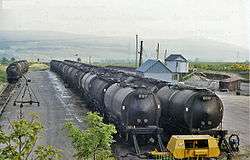Inverness and Aviemore Direct Railway
The Inverness and Aviemore Direct Railway was built by the Highland Railway to provide a direct route between Inverness and Aviemore.
| Inverness and Aviemore Direct Railway (Highland Railway) | ||||||||||||||||||||||||||||||||||||||||||||||||||||||||||||||||||||||||||||||||||||||||||||||||||||||||||||||||||||||||||||||||||||||||||||||||||||||||||||||||||||||||||||||||||||||||||||||||||||||||||||||||||||||||||||||||||||||||||||||||||||||||||||||||||||||||||||||||||||||||||||||||||||||||||||||||||
|---|---|---|---|---|---|---|---|---|---|---|---|---|---|---|---|---|---|---|---|---|---|---|---|---|---|---|---|---|---|---|---|---|---|---|---|---|---|---|---|---|---|---|---|---|---|---|---|---|---|---|---|---|---|---|---|---|---|---|---|---|---|---|---|---|---|---|---|---|---|---|---|---|---|---|---|---|---|---|---|---|---|---|---|---|---|---|---|---|---|---|---|---|---|---|---|---|---|---|---|---|---|---|---|---|---|---|---|---|---|---|---|---|---|---|---|---|---|---|---|---|---|---|---|---|---|---|---|---|---|---|---|---|---|---|---|---|---|---|---|---|---|---|---|---|---|---|---|---|---|---|---|---|---|---|---|---|---|---|---|---|---|---|---|---|---|---|---|---|---|---|---|---|---|---|---|---|---|---|---|---|---|---|---|---|---|---|---|---|---|---|---|---|---|---|---|---|---|---|---|---|---|---|---|---|---|---|---|---|---|---|---|---|---|---|---|---|---|---|---|---|---|---|---|---|---|---|---|---|---|---|---|---|---|---|---|---|---|---|---|---|---|---|---|---|---|---|---|---|---|---|---|---|---|---|---|---|---|---|---|---|---|---|---|---|---|---|---|---|---|---|---|---|---|---|---|---|---|---|---|---|---|---|---|---|---|---|---|---|---|---|---|---|---|---|---|---|---|---|---|---|---|---|---|---|---|---|
| ||||||||||||||||||||||||||||||||||||||||||||||||||||||||||||||||||||||||||||||||||||||||||||||||||||||||||||||||||||||||||||||||||||||||||||||||||||||||||||||||||||||||||||||||||||||||||||||||||||||||||||||||||||||||||||||||||||||||||||||||||||||||||||||||||||||||||||||||||||||||||||||||||||||||||||||||||
| ||||||||||||||||||||||||||||||||||||||||||||||||||||||||||||||||||||||||||||||||||||||||||||||||||||||||||||||||||||||||||||||||||||||||||||||||||||||||||||||||||||||||||||||||||||||||||||||||||||||||||||||||||||||||||||||||||||||||||||||||||||||||||||||||||||||||||||||||||||||||||||||||||||||||||||||||||
History

The Act of Parliament was passed on 28 July 1884 and the first section of line between Aviemore and Carrbridge was opened on 8 July 1892, the next section between Carrbridge and Daviot on 19 July 1897 and the final section to Millburn Junction in Inverness on 1 November 1898.
As part of the Highland Railway, the line became part of the London, Midland and Scottish Railway in 1923.
The line became part of British Railways Scottish Region on railway nationalisation in 1948. During the Government review of British Railways to reduce the financial losses on the railways, Dr Richard Beeching recommended the closure of small little-used country stations. Consequently, the small remote stations on the line, including, Culloden Moor (closed to passengers on 3 May 1965 and to goods on 27 February 1967)[1]Daviot (closed 3 May 1965),[2] Moy (closed 3 May 1965)[3] and Tomatin (the station, coal sidings and goods yard, but not the distillery's goods station, closed on 3 May 1965)[4] were all closed in the mid 1960s. The only surviving stations on this line were Inverness, Carrbridge and Aviemore.
Tomatin distillery's corporate goods station had not closed 3 May 1965, but the distillery's siding had closed by the mid 1970s.[5][6] The Culloden Moor and Tomatin sidings were taken by Highland Bitumen of Adrossens. Culloden Moor's sidings was still in use up to 1986.[7]
Connections to other lines
- At Inverness to the Inverness and Ross-shire Railway
- At Inverness to the Inverness and Nairn Railway.
- At Aviemore to the Inverness and Perth Junction Railway
Current operations
The line is still open as part of the Highland Main Line, operated by Abellio ScotRail.
Notes
- http://canmore.rcahms.gov.uk/en/site/14179/details/culloden+moor+station/
- http://canmore.rcahms.gov.uk/en/site/14118/details/daviot+station/
- http://canmore.rcahms.gov.uk/en/site/100490/details/moy+station/
- http://canmore.rcahms.gov.uk/en/site/100468/details/tomatin+station/
- http://canmore.rcahms.gov.uk/en/site/100468/details/tomatin+station/
- http://her.highland.gov.uk/hbsmrgatewayhighland/DataFiles/LibraryLinkFiles/229281.pdf
- https://www.geograph.org.uk/photo/3345327
References
- Butt, R. V. J. (1995). The Directory of Railway Stations: details every public and private passenger station, halt, platform and stopping place, past and present (1st ed.). Sparkford: Patrick Stephens Ltd. ISBN 978-1-85260-508-7. OCLC 60251199.
- Jowett, Alan (March 1989). Jowett's Railway Atlas of Great Britain and Ireland: From Pre-Grouping to the Present Day (1st ed.). Sparkford: Patrick Stephens Ltd. ISBN 978-1-85260-086-0. OCLC 22311137.
- RAILSCOT on Inverness and Aviemore Direct Railway
- Signalling Record Society